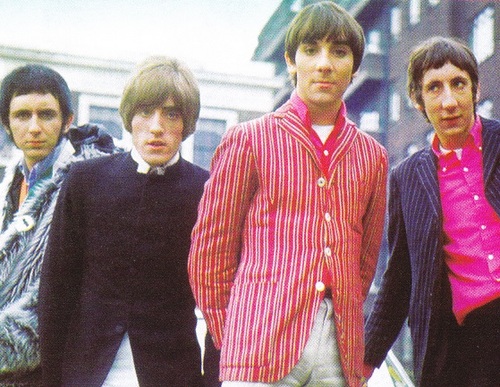New York, 22 December 2013
My wife and I have been trying for a while now to get our son to stop smoking. He’s the same age, give or take a year, that we were when we stopped but he’s still on 10 a day – more if the stress levels are high. With us cheering him on, he has tried various things: patches, gum, and I know not what. He even went cold turkey for a while. All for naught. So when back in May he decided to try e-cigarettes, we redoubled our cheering.

I know, they’re not the miracle cure they are sometimes claimed to be, but on balance we think they are better than real cigarettes.
Almost immediately, though, our son’s experiment with e-cigarettes went awry. During a night out with the boys just after he started using it the body broke (for the uninitiated, I should explain that an e-cigarette is composed of a body and a head; the two are separable and can be purchased separately, an important detail in the unfolding drama). After much badgering – our son was very busy with his new business (which of course augmented the stress levels and thus the cigarette consumption) – he finally got around to purchasing a new body via internet and received said body through the post. My wife and I breathed a sigh of relief, thinking that he would imminently be throwing away his cigarette packs. But no. Our son discovered that he couldn’t remove the head from the old body despite the use of much brute strength and wrenches. So still no e-cigarette use.
Things stood thus for several months before we came to New York to spend Christmas with the children. We were determined to move things along. After more badgering, we got some guidance from our son as to where we might go to separate head from body. Our initial thought had been to find a repair shop of some sort. But who runs repair shops these days, especially for so arcane a product as e-cigarettes?
So our search shifted to so-called vapor stores. These are locales which are vigorously promoting e-cigarettes and the vapor lifestyle. Again, to make sure that the uninitiated are following, recall that the principle of e-cigarettes is that you inhale water vapor impregnated with nicotine, taste molecules (our son favors mint and watermelon), and a few other odds and ends. Thus, vapor is central to the e-cigarette experience, thus stores offering this new lifestyle are called vapor stores, and thus the devotees of this new lifestyle call themselves vapers (in contrast to smokers; cute, no?).

We located two vapor stores in Lower Manhattan. The precise location of the stores is already an indication of the life choices of the fans of the vapor lifestyle. Because when I say lower Manhattan, I don’t mean Wall Street or thereabouts, the hang-out of the Gods of Finance and their acolytes from New Jersey, I mean NoLiTa. This is an area north of Little Italy (whence the name NoLiTa; the serious New Yorker must keep up with the continuous creation of new locational acronyms). I am informed that NoLiTa is now a very cool area to live in for those into the more alternative lifestyles.

After some blundering around the small streets of NoLiTa, we finally found the first vapor store on our list. As we entered, we suddenly felt like dinosaurs, relics from a past era.

Everyone in the place could have been our son or daughter, and every single one of them was puffing on an e-cigarette. They looked at us rather surprised. Clearly, troglodytes like us did not enter the shop often, if at all.
We diffidently made our way to the counter where a young man served us, e-cigarette in hand. And as we explained the problem, he sucked on his e-cigarette and breathed out vapor from his nostrils in a fashion that was very reminiscent of angry bulls in cartoons – my wife and I checked notes afterwards and both agreed on this point

After this impressively taurine display, our young man managed to separate head from damaged body and sold us a bottle of mint-tasting e-cigarette liquid. At which point our son rolled in and took over, giving my wife and I the leisure to look the place over.
Calling this a store is clearly a misnomer. What we have here is an experience, an event. Other than the counter and the vitrines in one corner showing off e-cigarettes and related paraphernalia
our store had a bar in another corner where various high-end teas were being served – no tea bags here – and where clients could sit at the bar sipping their tea, chatting convivially, and of course puffing on their e-cigarettes together.

In yet another corner it had a nook where vapers could sit on smart but environmentally-friendly furniture made with discarded objects, and flip through high-end magazines like Monocle, all the while puffing meditatively on their e-cigarettes.
(these photos are not of the store we saw, but the fact that I found them, and many others like it, makes me think that this is the basic blueprint of all vapor stores)
It all rather reminded me of the more traditional smoking rooms of the 19th Century
or more darkly of those high-end turn of the 19th Century Parisian brothels which Toulouse-Lautrec liked to paint

Like the French say, “plus ça change et plus c’est la même chose”, the more it changes and the more it’s the same thing. In every age, there’s always a part of society which wants to be exotic.
But all my wife and I want is for our son to quit smoking.
_________________
e-cigarette: http://www.vapeitnow.com/pics/joyetech-starter-kit/joyetech-evic-5.jpg [in http://www.vapeitnow.com/products/joyetech-starter-kit/joyetech-evic.html%5D
smoking e-cigarette: http://thegazette.com/wp-content/uploads/2013/08/ecigarettes680.jpg [in http://thegazette.com/2013/10/10/university-of-iowa-considers-e-cigarettes-and-campus-wide-smoking-ban/%5D
NoLiTa: http://dguides.com/images/newyorkcity/areas/nolita.jpg [in http://dguides.com/newyorkcity/areas/nolita/%5D
Dinosaur skeletons: http://www.dinostoreus.com/rex-vs-ceratops.jpg [in http://www.dinostoreus.com/%5D
Bull snorting: http://www.ecigarettedirect.co.uk/media/catalog/product/cache/1/image/9df78eab33525d08d6e5fb8d27136e95/r/a/raging-bull.jpg [in http://www.eliquid.co.uk/%5D
Vapor shop-1: http://ecigarettereviewed.com/wp-content/uploads/2013/06/vapor-loft-vape-shop.jpg [in http://ecigarettereviewed.com/so-cal-vapers-creating-their-own-june-gloom/%5D
Vapor shop-2: http://getvapordelight.com/newsite/wp-content/uploads/2013/05/IMG_93591.jpg [in http://vapordelight.com/vapor-bar-lounge/%5D
Vapor shop-3: http://www.yext-static.com/cms/af5ee3ea-019d-4b15-991d-76d4fc371fe1.jpg [in http://yellowpages.ny1.com/biz/buffalo-vapor-lounge/buffalo/ny/14216/53824266%5D
Smoking parlour Victorian England: http://www.victorianweb.org/art/architecture/clubs/11.jpg [in http://www.victorianweb.org/art/architecture/clubs/11.html%5D
Brothel Toulouse Lautrec: http://www.studiomatters.com/blog/wp-content/uploads/2011/03/719px-Henri_de_Toulouse-Lautrec_012.jpg [in http://www.studiomatters.com/art/olympias-heirs%5D














































